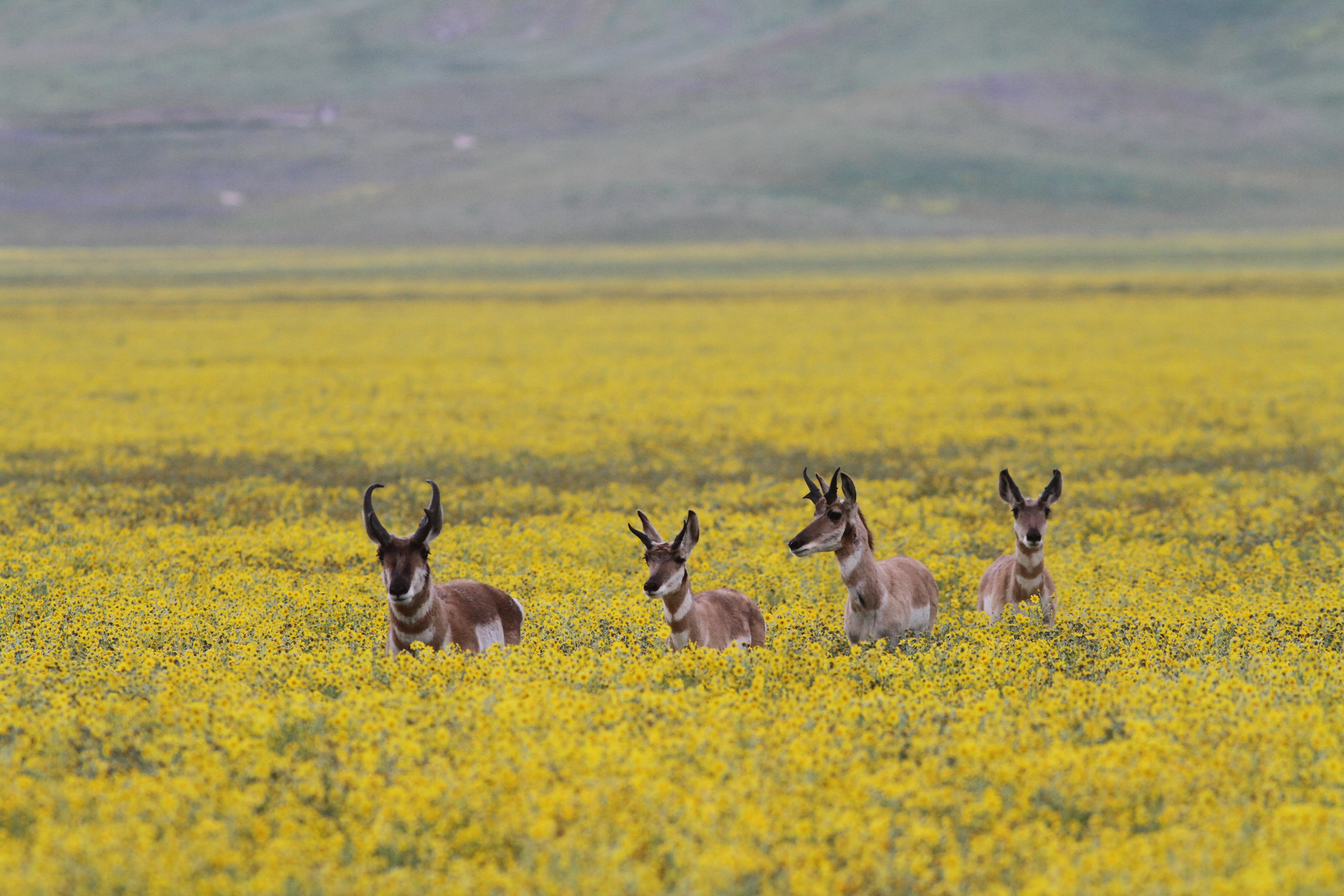Branching Out On the Carrizo Plain
Carrizo Plain Conservancy Makes Major Strides in Protecting Wildlife

Driving slowly along Soda Lake Road in the Carrizo Plain National Monument, I noticed a flash of a fury, four-legged critter 50 yards to the west. An endangered San Joaquin kit fox had just vanished into its grassland den.
However, its mate froze, choosing to lay flat, even its ears flattened out Yoda-like. I stopped my truck, grabbed a camera, and proceeded to belly-crawl 40 yards toward the motionless kit fox.
It never wavered, and as I approached, it almost appeared to be napping on the wide-open Carrizo Plain, one of the last bastions for this high desert canid.
Kit foxes and other wildlife in the Carrizo Plain are getting an environmental boost thanks to the tireless efforts put forth by the Carrizo Plain Conservancy (CPC). Since 2013, the Conservancy has focused on attaining additional lands surrounding the current National Monument of 246,812 acres by acquiring additional properties to enhance the current state of flora and fauna in the southern San Joaquin Valley. The monument itself possesses more endangered species than anywhere else in California, such as California jewel flower, blunt-nosed leopard lizard, antelope ground squirrels, giant kangaroo rats, and others.
The Carrizo Plain Conservancy acquired a total of 8,000 acres in 2015 in and around the monument, the majority of those lands coming from the 550-megawatt Topaz Solar Farm and the California Valley Solar Ranch. Both companies are just north of the National Monument and are within close proximity to one another, and both were required to set aside lands for conservation. Topaz Solar Farm was to conserve 5,400 acres and California Valley Solar Ranch was to conserve 2,500 acres.
The solar plants failed to meet those requirements, but after several lawsuits and settlements, they were required to meet those demands. Subsequently the 8,000 acres were turned over to the CPC. Other lands acquired were from private inholdings near the Carrizo Plain National Monument.
“We would like to see as many inholdings as possible in the monument placed into public ownership,” said Neil Havlik, president of the CPC. “There will be limits on what can be done in the California Valley and other private lands outside the monument due to mostly fiscal restraints.”
Restoration efforts have moved forward following those acquisitions, but surprisingly the additional lands north of Highway 58 were already in decent shape with regards to native flora. Sequoia Riverlands Trust, who has successfully restored lands in other regions of the San Joaquin Valley and in the Western Sierra has overseen any restoration projects.

“California Department of Fish and Wildlife feels that the lands north of the monument are already excellent habitat,” continued Havlik. “They see timed livestock grazing as the primary means of grassland management.”
Arguably the most threatened animal on the Carrizo Plain is North America’s fastest land mammal, the pronghorn antelope. Over the years, many of its corridors were cut off due to barbed wire fencing, thus these grazers have experienced a tough go expanding their range within the monument and beyond. There are pronghorn herds on either side of Highway 58, and the goal is to open wildlife corridors and allow those herds to congregate.
Now with more land added on either side of Highway 58, improvements can be made to enhance pronghorn habitat and expansion. Where native flora needs to be added, this is especially important for fawns who need cover to hide from predators.
“Fencing on both sides of Highway 58 has been problematic for pronghorn, but the relatively low level of vehicle traffic there means the roadway itself has not been a major source of kill,” said Havlik. “Much of the fencing along Highway 58 has been made more pronghorn friendly in recent years.”
Pronghorn don’t jump over fencing, instead opting to duck underneath it. Barbed wire fencing has always been an issue for pronghorn, but as time has gone on more barbed wire fencing has been removed or replaced with loose, straight wire, making it easy for pronghorn to slip underneath.
“We support continued removal and upgrading of fencing to make things pronghorn friendly,” he said. “Also, shrub reestablishment will help improve success in fawn rearing.”
The Carrizo Plain Conservancy has also made a point of purchasing lands with high vegetation quality. In many cases the properties purchased don’t need anything other than fence removal.
“Removing fencing is the least expensive project to restore habitat,” said Steph Wald, board secretary for the CPC. “Water features for wildlife requires more effort. We want to develop wildlife corridors between Bittercreek National Wildlife Refuge through the California Valley.”




You must be logged in to post a comment.